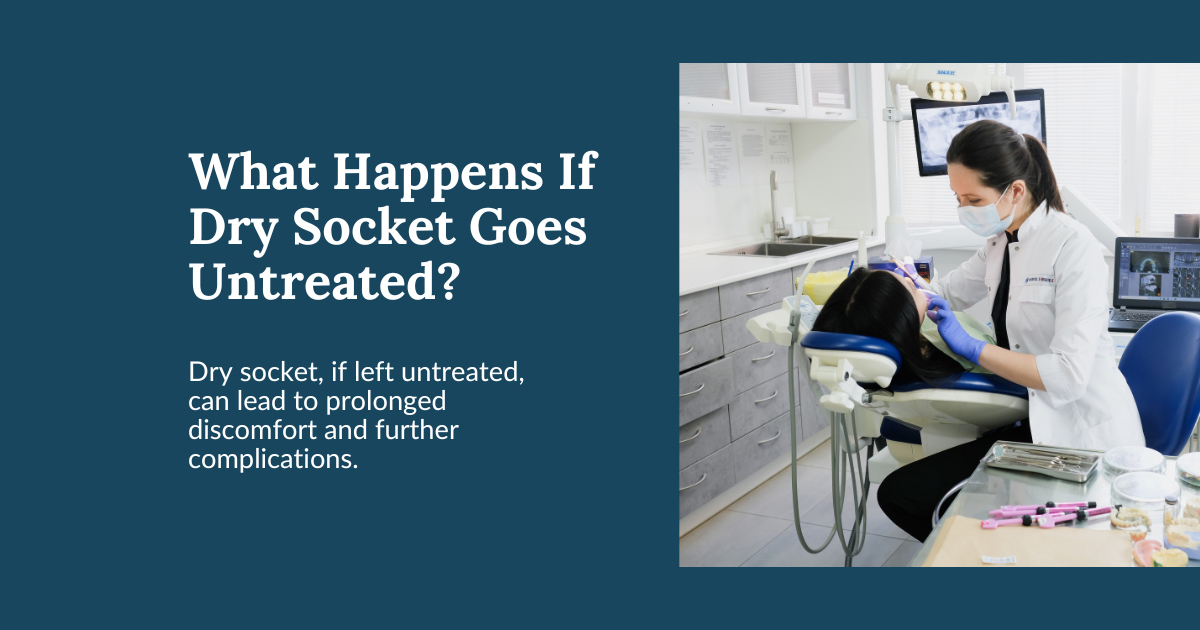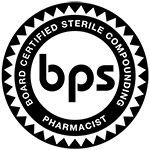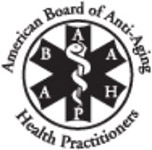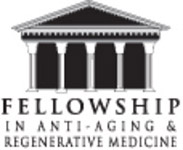
Dental dry socket, medically known as alveolar osteitis, is a common yet painful complication that can occur after a tooth extraction, particularly when a molar or wisdom tooth is removed. Normally, a blood clot forms at the site of extraction, acting as a protective layer over the exposed bone and nerves. However, when this clot becomes dislodged or fails to form, the result is a dry socket, leaving the sensitive area exposed and causing significant discomfort.
Patients experiencing dry socket often report intense, throbbing pain that radiates to the jaw or ear, coupled with a bad taste in the mouth or noticeable bad breath. This condition not only delays the healing process but can also interfere with daily activities like eating, drinking, or speaking comfortably.
While dry socket can be a frustrating setback during the recovery process, it’s highly treatable with the right approach. Compounded medications explicitly developed for dry socket pain relief provide a personalized and effective solution, alleviating discomfort while supporting tissue regeneration for faster healing. Whether you’re recovering from a routine extraction or a more complex dental procedure, understanding the causes and treatment options for dry socket can make all the difference in your recovery journey.
In the sections ahead, we’ll explore the causes, symptoms, and treatment options for dry socket, highlighting the unique benefits of compounded medications for dental dry socket pain relief and promoting a faster, more comfortable recovery.
Causes and Symptoms of Dry Socket
Understanding the causes and symptoms of dental dry socket is crucial for timely recognition and effective treatment. Being informed empowers patients to take swift action, reducing discomfort and preventing complications. We’ll guide you with trustworthy, expert-backed information to help you navigate the challenges of dry socket. With insights you can rely on, you’ll gain a clearer understanding of what to expect and how to address this surprisingly common dental concern.
Common Causes of Dry Socket:
- Trauma at the Extraction Site: Excessive force during tooth removal or disruption during healing can dislodge the clot.
- Smoking or Tobacco Use: Chemicals in tobacco products can delay healing and increase the risk of clot dislodgment.
- Poor Oral Hygiene: Bacteria at the site can interfere with proper healing, leading to complications.
- Use of Straws or Vigorous Rinsing: Suction or forceful mouth movements can disturb the clot.
- Certain Medical Conditions: Conditions like diabetes or immune disorders can impair the healing process.
Symptoms to Recognize:
- Severe, Persistent Pain: Often radiating to the jaw, ear, or temple, this pain typically develops 1–3 days after extraction.
- Exposed Bone at the Site: The area may appear empty, with the absence of a protective clot.
- Foul Taste or Odor: A bad taste or smell in the mouth often signals infection or tissue exposure.
- Swelling and Redness: Though not always present, inflammation around the site may occur.
Timely identification of these symptoms is critical to preventing further complications. If you suspect dry socket, consult your dentist immediately for evaluation and treatment. Addressing the condition early with compounded medication options can significantly reduce discomfort and speed recovery, ensuring a smoother healing process.
What Happens If Dry Socket Goes Untreated?

Dry socket, if left untreated, can lead to prolonged discomfort and further complications. Without appropriate care, the exposed bone and nerves at the extraction site remain vulnerable to irritation, infection, and delayed healing. This will significantly impact a patient’s overall oral health and quality of life.
Untreated dry socket may result in:
- Persistent Severe Pain: The unprotected nerves can cause throbbing or radiating pain, often extending to the ear or neck.
- Infection Risks: An open wound increases the likelihood of bacterial infections, which can further complicate the healing process.
- Delayed Healing: Without intervention, the exposed site may take significantly longer to recover, prolonging discomfort and the risk of further complications.
- Spread of Infection: In severe cases, bacteria may spread to adjacent areas, potentially affecting other teeth or even leading to systemic issues if left unchecked.
Seeking prompt treatment not only alleviates pain but also minimizes these risks, ensuring faster recovery and better oral health outcomes. Compounded medications modeled to dry socket care offer an effective and personalized solution to address the challenges quickly.
Compounded Medications for Dry Socket Pain Relief
Our bespoke medications provide a highly effective, personalized approach to managing the pain and complications associated with dental dry socket. Unlike over-the-counter solutions, compounded treatments are specifically formulated to target the patient’s individual needs, ensuring optimal relief and faster healing.
Key Types of Compounded Medications:
- Pain Relief: Local anesthetics, such as lidocaine or benzocaine, are compounded into gels or pastes for direct application to the affected area. This approach provides immediate, targeted pain relief without systemic side effects.
- Infection Control: Antibacterial or antiseptic compounds, such as chlorhexidine or metronidazole, help reduce the risk of infection and support a sterile environment at the extraction site.
- Healing Support: Compounds containing ingredients like hyaluronic acid or vitamin E promote tissue regeneration and accelerate the healing process.
- Custom Formulations: Tailored combinations of active ingredients can address multiple concerns simultaneously, such as combining pain relief, anti-inflammatory agents, and infection prevention.
Advantages of Compounded Medications:
- Precision: Medications are customized to match the severity of the condition and the patient’s specific sensitivities or allergies.
- Ease of Use: Formulations such as topical gels, pastes, or rinses are easy to apply directly to the site, ensuring effective treatment.
- Targeted Pain Relief: Compounded formulations deliver medication directly to the affected area, ensuring precise and effective relief from discomfort.
- Comprehensive Care: Combining multiple therapeutic agents into one formulation enhances convenience and treatment efficiency.
By addressing each patient’s unique situation, compounded medications offer powerful alternatives to standard treatments, improving comfort and promoting a faster recovery. Consult with your dentist and Compounding Pharmacy of America to explore all solutions for effective dental care.
Comparing Compounded Medications to Over-the-Counter Options
When it comes to managing the pain and discomfort of dental dry socket, patients often weigh the benefits of compounded medications against over-the-counter (OTC) options. While OTC treatments can offer temporary relief, compounded medications provide a more comprehensive and personalized approach to care.
| Aspect | Compounded Medications | Over-the-Counter Options |
| Customization | Tailored to individual needs | Standardized for mass use |
| Combination Therapy | Multiple agents in one formulation | Single-function product |
| Targeted Delivery | Designed for localized use | Generalized application |
| Efficacy | Enhanced healing and relief | Temporary symptom management |
Over-the-Counter Treatments
- Limited Relief: OTC painkillers like ibuprofen or acetaminophen can alleviate mild pain but may not target the specific site of discomfort effectively.
- No Healing Support: Standard OTC options lack ingredients that promote tissue regeneration or directly address the root causes of dry socket.
- Not Suitable for Severe Cases: OTC options may not be effective for managing the severe pain or healing needs associated with conditions like dry socket.
- Potential Side Effects: Prolonged use of pain OTC medications may lead to side effects such as gastrointestinal upset or dependency on stronger doses.
Power of Compounded Medications
- Site-Specific Pain Relief: Compounded treatments, such as topical anesthetic gels, provide targeted relief directly at the extraction site, minimizing discomfort more effectively.
- Customized Formulations: Unlike OTC options, compounded medications can combine multiple therapeutic agents—such as pain relievers, anti-inflammatories, and antibiotics—into a single, easy-to-use formulation.
- Faster Healing: Compounded solutions often include active ingredients designed to accelerate tissue repair and reduce inflammation, aiding in a quicker recovery process.
- Reduced Allergens: For patients with sensitivities to common OTC additives, compounded medications can be formulated without irritants like dyes or preservatives.
- Convenience in Application: Available in user-friendly forms like gels, pastes, or rinses, compounded medications simplify the treatment process for patients.
- Combination Therapies: Multiple therapeutic agents, such as pain relievers and antibiotics, can be combined into one formulation, streamlining the healing process.
How to Access Compounded Medications for Relief

Accessing compounded medications for dry socket is easier than you might think. These personalized dental treatments are tailored to your distinct needs and are created through specialized compounding techniques.
Here’s a step-by-step guide to obtaining your prescription:
-
Consult with Your Dentist or Oral Surgeon
The first step is discussing your symptoms and treatment options with your dental professional. They can determine which compounded medication is the right choice for managing your pain and promoting healing.
-
Obtain a Prescription
Compounded medications require a prescription from your dentist or oral surgeon. This ensures that the formula is designed specifically for your condition, considering factors such as the severity of your dry socket and any allergies or sensitivities you may have.
-
Partner with Compounding Pharmacy of America
Once your dentist or oral surgeon provides a prescription, our experienced team will prepare your medication according to the exact formula tailored to your needs. With a proven track record of excellence, we prioritize both precision and patient care.
-
Place Your Order
Once the pharmacy receives your prescription, we will prepare the medication according to the specified formula. During the ordering process, our team will work with you to arrange convenient delivery or pick-up options, ensuring you receive your treatment in the way that works best for you.
-
Follow the Usage Instructions
Be sure to use your medication exactly as directed. Whether it’s a topical gel, a rinse, or another form, proper application is crucial for effective pain relief and healing.
By following these steps, you can access tailored pain relief that addresses your precise needs, helping you recover faster and with greater comfort.
How Long Does It Take for Dry Socket to Heal?
Healing from a dry socket can vary depending on the severity of the condition and the treatment used. On average, most cases resolve within 7–10 days with proper care and medication. However, in extreme cases where the dry socket is not treated promptly or becomes infected, healing can take several weeks and may require more intensive medical intervention. Compounded medications can play a crucial role in managing pain and promoting faster recovery, even in more severe situations.
To ensure a smooth recovery:
- Follow your dentist’s or oral surgeon’s instructions closely.
- Apply all prescribed medications as directed.
- Avoid activities like smoking or drinking through a straw, which can slow the healing process.
By using compounded medications from trusted providers like Compounding Pharmacy of America, you can support your body’s natural healing process and minimize discomfort during recovery.
Can Dry Socket Be Prevented with Compounded Medications?

Yes, these medications can play a preventive role in reducing the risk of dry socket after a tooth extraction. Compounded antibacterial rinses or gels, specifically formulated for your needs, can help prevent infection at the extraction site. Additionally, protective coatings created specifically for your individual situation can help stabilize and safeguard the blood clot, which is crucial for proper healing and preventing the painful exposure of bone and nerves.
By working with your dentist and a trusted compounding pharmacy like Compounding Pharmacy of America, you can explore preventive treatment options that address your individual oral health needs. Personalized dry socket treatment, including tailored rinses and coatings, ensures your recovery plan is focused on infection control, pain management, and clot preservation.
So, if you’re planning a tooth extraction, be sure to discuss customized medications as part of your post-extraction care plan to help minimize the risk of developing dry socket and support faster recovery.
FAQs About Dry Socket Treatment
Get Personalized Dry Socket Relief

Don’t let dry socket pain disrupt your recovery. With customized compounded medications from Compounding Pharmacy of America, you can get targeted relief designed specifically for your needs. Whether you’re seeking to prevent dry socket after a tooth extraction or need effective treatment to alleviate pain and promote healing, we’re here to help.
Contact us today to discuss your options or speak with your dentist about how compounded medications can enhance your recovery. Let us provide the personalized care you deserve for a faster, more comfortable healing process.
Want to learn more? Visit our Guide to Dental Compounding Services.
*Editor’s Note: This article was medically reviewed for accuracy and updated in December, 2024. Older articles on this topic have been updated and consolidated into this comprehensive guide.
Sources:
- American Dental Association. (2023). Managing dental extractions: Best practices for preventing and treating dry socket. ADA Publications. Retrieved from https://www.ada.org
- Cummings, R. D., & Mathews, T. J. (2022). Post-extraction complications: Understanding and managing dry socket. Journal of Oral Health and Dentistry, 34(2), 123-131. https://doi.org/10.1016/j.johd.2022.06.005
- Jones, L. M., & Baker, J. S. (2021). Advances in compounded medications for dental pain management. Compounding Pharmacy Journal, 12(4), 45-52. Retrieved from https://www.cp-journal.com
- National Institute of Dental and Craniofacial Research. (2023). Dry socket: Symptoms, causes, and prevention. NIDCR Fact Sheet. Retrieved from https://www.nidcr.nih.gov
- Smith, A. R., & Hughes, P. (2020). The efficacy of antibacterial rinses in preventing alveolar osteitis: A review. International Journal of Dentistry and Oral Surgery, 18(1), 56-64. https://doi.org/10.1093/ijds.18.1.56
- Williams, T., & Patel, S. (2022). Personalized care in dentistry: The role of compounded medications. Modern Pharmacy in Practice, 10(3), 78-85. Retrieved from https://www.modernpharmacypractice.com
- Zhou, Y., & Klein, R. A. (2023). Pain management in oral surgery: A comparative analysis of compounded and OTC options. Clinical Dental Research, 28(5), 212-219. https://doi.org/10.1177/clinicaldentres28-5-212
- Brown, L. T., & Nguyen, P. H. (2021). Exploring the role of topical anesthetics in dental pain management. Oral Health Advances, 15(6), 145-153. https://doi.org/10.1177/15-6-145153
- Miller, R. J., & Davis, S. A. (2020). The impact of smoking on post-extraction complications: A systematic review. Dental Surgery Journal, 24(3), 98-106. https://doi.org/10.1126/dsj.24.3.98
- Parker, J. S., & Lee, H. K. (2023). Innovations in oral surgery: The application of compounded medications. Journal of Advanced Dentistry, 33(2), 67-74. https://doi.org/10.1002/jad.33.2.67
- Thompson, E. F., & Singh, A. (2022). Compounded vs. commercial medications in postoperative dental care. Pharmaceutical Advances, 9(1), 33-41. https://doi.org/10.1080/pharmadv.9.1.33
- Watson, K. R., & Ford, B. A. (2023). Analyzing patient outcomes with personalized dental treatments. Global Dentistry Insights, 18(4), 189-195. https://doi.org/10.1080/gdi.18.4.189195

Compounding Pharmacy of America is committed to delivering reliable, accurate, and actionable health information to empower you on your wellness journey. Our content is created and reviewed by a dedicated team of professionals, including experienced writers and licensed healthcare experts.
Learn More About Compounding Pharmacy of America Editorial Team





 Subscribe to Our Newsletter
Subscribe to Our Newsletter
